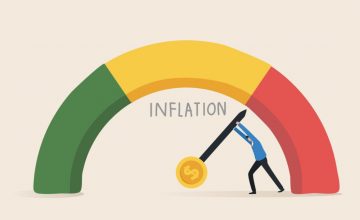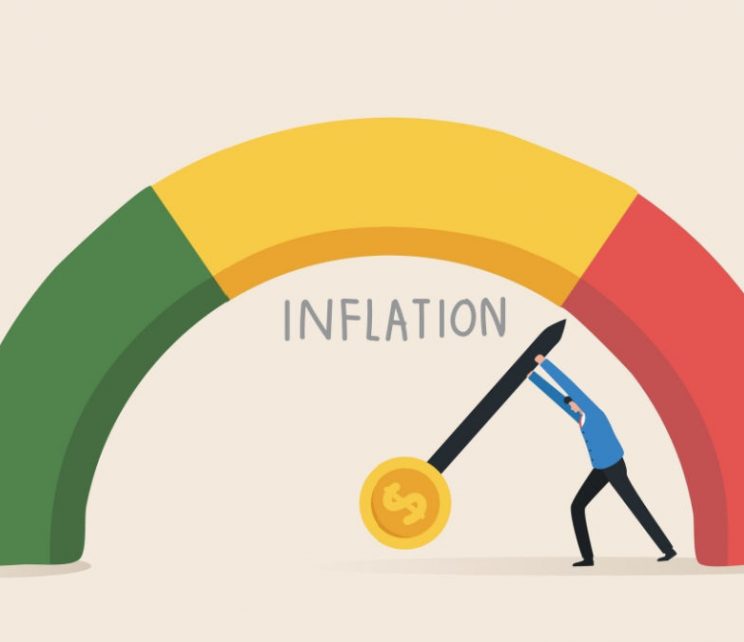
Mainstream Online Web Portal
LoginInvestors can view their accounts online via a secure web portal. After registering, you can access your account balances, periodical statements, tax statements, transaction histories and distribution statements / details.
Advisers will also have access to view their clients’ accounts online via the secure web portal.
The Point
Quick, actionable insights for investors
Multi-asset

Alan Polley: What is r* and how it helps investors analyse rates
We’d all like a better idea of where cash rates are going and what returns we can expect from our investments in the future.
One of the tools our multi-asset team uses to get a better view is r*.
Pronounced “r-star”, it’s a term economists use for the real level of interest rates at which the economy neither expands nor contracts.
“Looking forward, we see the r* around the 1 per cent level – providing a reasonable compensation for the opportunity cost of supplying capital,” says Alan Polley, a PM with our multi-asset team.
“A higher r* means the forward-looking return environment is higher than it has been since the GFC.
“Another nice aspect is valuations – with r* trending down before the pandemic we had valuations going up. High valuations mean more risk looking forward.
“Now that we have r* at more normal levels, valuations are back to more normal levels as well.
“These two things suggest the return outlook is more attractive than it was before the pandemic.”

Why our multi-asset team is increasing its exposure to bonds
Quick view
Why our multi-asset team is increasing its exposure to bonds
As inflation begins to fall investors can have more confidence investing in government bonds, argues Michael Blayney, Pendal’s head of multi-asset.
“Inflation in the US has come off a long way,” says Michael. “It peaked above 9 per cent last year and most recently it’s come in just below 5 per cent on a headline basis.
“This has important portfolio considerations. It means you can have a bit more confidence in your bond allocation, because the biggest risk to bonds, ultimately, is inflation.
“We have moved to slightly over-weight bonds and that’s a big change because we were underweight bonds for a long time.”
While global bond yields are broadly in line with Michael’s estimate of fair value, he cautions that elevated services price inflation and a very tight labour market remain key risks for bonds.
Offsetting this is the risk of recession, when bonds should provide their traditional “risk off” portfolio benefits.
Economists have been forecasting a US recession for months and while the timing continues to get pushed out, it’s still on the cards, says Michael.

Michael Blayney: Why it’s better to stay the course on sustainable strategies, even when energy prices are high
Quick view
Michael Blayney: Why it’s better to stay the course on sustainable strategies, even when energy prices are high
The nerves of ESG investors were tested last year when oil and gas prices soared, causing underperformance in some sustainable funds.
But research by our multi-asset team shows long-term ESG investors should stay the course through bumpy times.
Analyst Rita Bodrina recently examined MSCI ESG data going back to 2000.
She found companies in the top 20 per cent of ESG-rated stocks were more efficient that those in the middle segment, and sharply better than the bottom 20 per cent.
Rita also found that ESG companies were better valued by the market over time. And based on cumulative returns over 22 years, low-rated ESG companies generally underperformed.
“Paying attention to ESG factors alongside traditional financial factors leads to better returns and better management of risk,” says our multi-asset chief Michael Blayney.
“Investors certainly don’t have to give up returns if they choose a sustainable strategy.”

Multi-asset: Why it’s time to shift to liquid alternative investments
Quick view
Multi-asset: Why it’s time to shift to liquid alternative investments
It’s time to start shifting from illiquid alternative investments to liquid alternatives, argues Alan Polley, a portfolio manager with our multi-asset team.
Illiquid alternative assets are dominated by property and infrastructure and are usually private, or unlisted.
“Illiquid assets have had a fantastic secular tailwind for the last two decades because interest rates have been falling and they’ve been chased by a wall of effectively free money bidding up prices,” Alan says.
But the good times for illiquid assets are over, thanks to an accelerated rate-tightening cycle, he says.
Shifting to liquid alternative investments will be a theme for this year, Alan believes.
“Look for those that offer true diversification benefits and other forms of returns besides traditional equities and bonds.
“Look for assets that have a secular tailwind, such as sustainable investment companies, and investments with inflation linkage.”

Michael Blayney: Inflation is still driving investment markets, which means a cautious approach for now
Quick view
Michael Blayney: Inflation is still driving investment markets, which means a cautious approach for now
Despite yesterday’s news of a continued easing in Australia’s monthly CPI from 7.4% to 6.8%, inflation will remain a key driver of investment markets, just as it was throughout the first quarter, says our head of multi-asset Michael Blayney.
“While inflation looks to have peaked, it could become sticky in some economies,” Michael says.
“In the US, for example, it could remain around the four to five per cent range with further falls dependent on softening wages and increased labour capacity.”
Investors are pricing in a normalisation of inflation.
“But markets react relative to what’s priced in, so if inflation proves to be more sticky than what’s priced in, that creates risks for both bonds and equities.”

Michael Blayney: How to manage portfolios as regulators play whack-a-mole
Quick view
Michael Blayney: How to manage portfolios as regulators play whack-a-mole
The past few weeks have demonstrated the need for perspective as investors manage portfolios through increased volatility, says Pendal’s head of multi-asset Michael Blayney.
The CBOE Volatility Index spiked to its highest levels for the year after the Credit Suisse and Silicon Valley Bank crises.
“We are not at extreme panic right now,” says Blayney. “But we are starting to see problems emerging.
“Central banks have raised interest rates at a rapid pace over the last year. By doing so it was always a possibility, or even a probability, that they’d break something.
“That’s what we are now seeing, and regulators are coming out and playing a game of whack-a-mole.”
Investors now need to decide if the recent sell-off is a buying opportunity, or whether markets are mid-crisis, and there’s further to fall.

Michael Blayney: We’re not in the clear yet on a recession. Here’s why
For all the talk, the US hasn’t fallen into recession.
Corporate earnings haven’t been crushed, despite inflation and a string of interest rate hikes.
It’s looking like the US, Australia and other major economies might escape a recession, right?
Not so fast, says Pendal’s head of multi-asset Michael Blayney.
“A recession is still likely, but it’s going to be pushed further out,” Michael says.
Higher inflation and interest rates take time to hit the real economy, he says.
Turning points in economic cycles normally involve plenty of “noise” – information that can be contradictory and not always conducive to good investment decisions or policy making.
“If you look at the lead story on the television every day and invest on the back of that, you probably won’t get a good result,” Michael says.
“But if you have a disciplined process and follow it consistently through time, you should make money in the long term.”

Caution warranted after strong market rally
Quick view
Caution warranted after strong market rally
The market’s turnaround from last year’s pessimism is a short-term reaction to a “perfect storm” of positive events – and investors should be cautious, says Pendal’s Alan Polley.
Much of the 15%+ gains in equities this year can be explained by near-term events such as investors closing out last year’s short positions, says Alan, a Pendal’s multi-asset PM.
There is less clarity about the medium-term prospects for shares. Investors should be watching corporate earnings, which is where the effect of higher rates on household spending and business activity will start to show.
So far results are mixed in the current ASX half-year reporting season.
“There’s downside risk on earnings. If earnings are further adjusted down, then equities have more downside risk than upside so there’s not much rationale for material gains at this point, especially after we’ve had markets rally 15%.
“We don’t see reason to have a lot of risk. Our signals are suggesting being reasonably neutral.”

Michael Blayney: It’s time to be patient and wait for an opportunity
Quick view
Michael Blayney: It’s time to be patient and wait for an opportunity
Expectations are often more important than absolute numbers, as most investors know.
This week’s US inflation data was “pretty much as expected”, says Pendal’s head of multi-asset Michael Blayney. “Inflation is too high but it’s coming down.”
The CPI data reinforced the high probability of a 25bp Fed hike to 5 per cent in March. Futures markets are implying US hikes will peak at about 5.25 per cent mid-year.
Investor reaction to the CPI was relatively muted. Volatility after an inflation print or Fed rates decision has lessened in recent months, Michael observes.
“For the market, it’s not what the number is. It’s what the number is, relative to what the market expected.”
While rates and inflation remain important, markets have shifted their attention somewhat to recessionary risks and corporate earnings, he says.

Michael Blayney: How to invest in a recession
Quick view
Michael Blayney: How to invest in a recession
The Fed’s rate hikes will likely push the US into recession this year, says Pendal multi-asset chief Michael Blayney.
Some forward-looking US indicators such as the Purchasing Managers Index (a measure of manufacturing health) are showing weakness. We’ve also seen broker earnings downgrades.
“This is one of the most forecast US recessions ever,” Michael says.
But if the US falls into recession, investors should be ready to buy falling equities and take advantage of higher bond yields, he says. Sticking to a long-term strategy is critical, but hold a little more cash than usual.
Michael is underweight US equities, but overweight in “some of the cheaper, more ‘value’ equity markets like Australia and the UK”.
The cycle is also turning towards government bonds he says, though corporate bonds won’t offer the same reward for risk in a recession.

Strategic asset allocation: what matters in the long run
Quick view
Strategic asset allocation: what matters in the long run
Strategic asset allocation is about setting aside the day-to-day noise and thinking about the long term.
For example, three long-term issues that stand out to our multi-asset team are the build-out of renewable energy infrastructure, persistent higher inflation and geo-political risk.
Weighing up these themes and others has led the team to recently adjust their portfolios.
“We’re increasing our exposure to bonds,” says multi-asset PM Alan Polley. “They’re are offering attractive yields and have material diversification benefits. This will also help defend against a potentially more volatile, long-term outlook.
“We’re also moving some capital into sustainable investment companies. With the secular theme of higher inflation, you want more real assets.
“Net-zero carbon emissions commitments provide a tailwind for renewable energy assets and a hedge to energy inflation.”

It’s time to do an annual portfolio health check. Here’s how
Quick view
It’s time to do an annual portfolio health check. Here’s how
A regular portfolio health check is a critical part of successful investing – and doubly so after a volatile 2022.
There are three steps to follow says Alan Polley, a portfolio manager in Pendal’s multi-asset team:
- Review your strategic asset allocation
- Consider active asset allocation
- Ensure sufficient diversification
Risk tolerance and long-term goals shouldn’t change after a negative year, says Alan.
“When markets are volatile, your portfolio can stray away from your risk tolerance, and potentially at the wrong time.
“Buying cheaper asset classes at lower prices the ones that have sold off and are giving you the pain – should add to your returns over time.”
Loading posts...
Loading posts...














